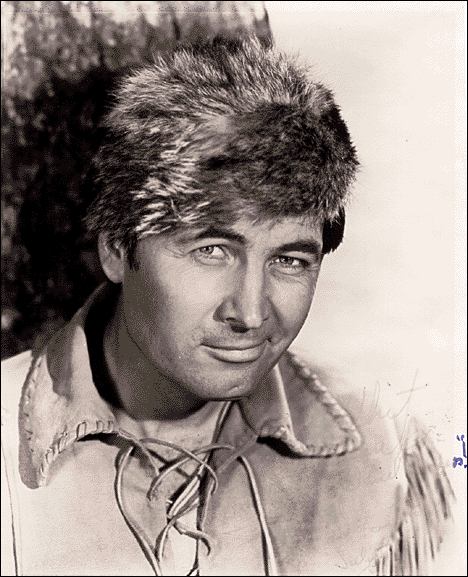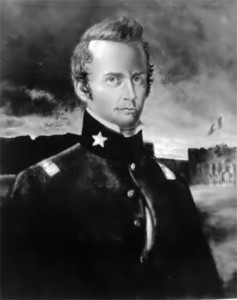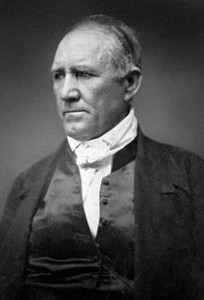The play The Lion of the West opens in New York City, today in 1831. It was the first of many plays, books, and

movies celebrating Davy Crockett. It stars James Hackett as a parody of Davy, a character called Nimrod Wildfire.
Born in 1786 in Tennessee, Crockett grew up in a poor family that hired him out as a cattle drover at age 12. He eventually settled in middle Tennessee, where he became famous for his skill as a professional hunter. The Tennessee forests of were still filled with game at that time, and Crockett once killed 105 bears in a single season.

After a stint fighting Indians with future president, Andrew Jackson, Crockett began a career in politics, eventually becoming a Tennessee state representative in 1821. As a state legislator, Crockett was a strong advocate for the rights of squatters who were claiming land on the frontier without legal permission. At the same time, the political fortunes of his old commander, Andrew Jackson, were on the rise. When Jackson became president in 1828, he pointed to Crockett as a symbol of the frontier values and spirit he believed should be adopted throughout the nation.
Politics alone, however, would not have ensured Crockett’s enduring status as an American hero. For that, only the 19th-century version of Hollywood would be adequate. In 1831, the play The Lion of the West opened at New York City’s Park Theater. Starring the popular actor James Hackett as a legendary frontiersman named Colonel Nimrod Wildfire, the play was a thinly disguised and highly exaggerated account of Crockett’s life. Two years later, the play was followed by an equally larger-than-life biography, Sketches and Eccentricities of Colonel David Crockett of West Tennessee.
After Crockett died at the Alamo in 1836, along with fellow frontiersman James Bowie, William Barrett Travis and nearly two hundred other volunteers, his posthumous transformation from mortal man to mythic martyr was almost inevitable. A bogus 1836 autobiography portrayed him as an American Hercules and established many of the tall tales that would remain forever associated with his name.

In the 20th century, Crockett’s fame waned for a time, but Walt Disney revived the legend. In 1954, Disney began producing a series of movies and television programs featuring the actor Fess Parker as Crockett. The series was a ratings blockbuster, and it led to the largest media-generated commercial craze up until that time. Children all across America clamored for coonskin caps, powder horns, books, and records so that they could be just like their idol, Davy Crockett.
To purchase a signed copy of Larry Auerbach’s novel “COMMON THREADS”, Click Here
Photo courtesy of wikpedia





